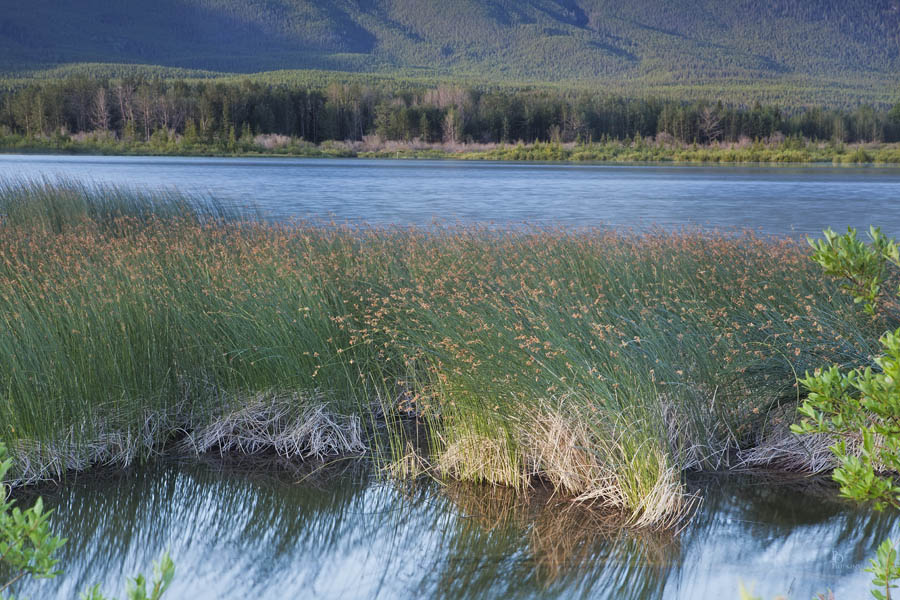Occasionally when I go back through photos I have taken earlier, I’ll come across a shot that did not pass initial scrutiny in my review of that day’s more interesting pictures. On second look I’ll find that picture has an appeal that did not catch my attention the first time around. Here is such a picture that I got while taking pictures at Vermilion Lakes earlier this summer. It’s a very simple picture showing bulrushes along the side of the lake.

What caught my eye in this picture is sharpness of the fine detail in the foreground, which includes the reflection in the water. This sharpness is contrasted by the softness in the rest of the picture. As your eye moves back further into the scene, the sharpness apparent in the foreground diminishes. Firstly, there is a blur created at the top of the rushes by the wind. (Difficult to get sharpness with an exposure of 1.3 seconds when the subject is moving.) Moving further into the scene, trees on the other side of the lake look softer. Despite using a small aperture (f16), the depth of field is limited by my proximity to the bulrushes where I have focused my lens. Depth of field (DOF) is the distance between the nearest and farthest objects in a scene that appear acceptably sharp in an image. Although a lens can precisely focus at only one distance at a time, the decrease in sharpness is gradual on each side of the focused distance, so that within the DOF, the unsharpness is imperceptible under normal viewing conditions. Objects outside this field of sharp focus appear softer or blurrier.
